Click on the top left picture and scroll through the story by clicking right.
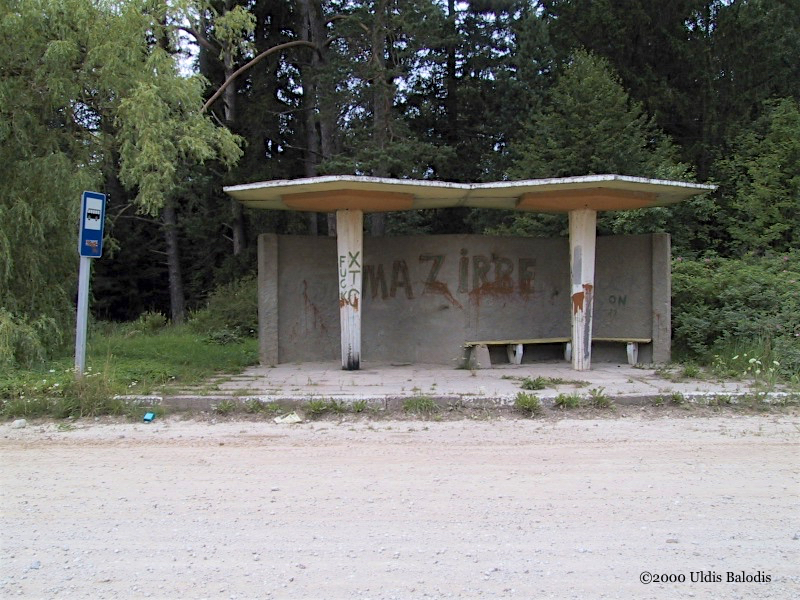
When I was fifteen I began to read about the coast. Soon I wanted to learn its language. Thoughts of this distant shore fired my imagination. I would come to the coast the summer I turned twenty-two. Irē, or Mazirbe, as it is called in Latvian, was my first stop. I spent several weeks there, studying Livonian, exploring the area, and following the progress of the Livonian youth camp. This bus stop was my first real impression of the coast. Covered in graffiti and American profanity, it seemed more hilarious than shocking. This was a real place after all, with many of the same problems as anywhere else. But that didn’t mean it wasn’t amazing.
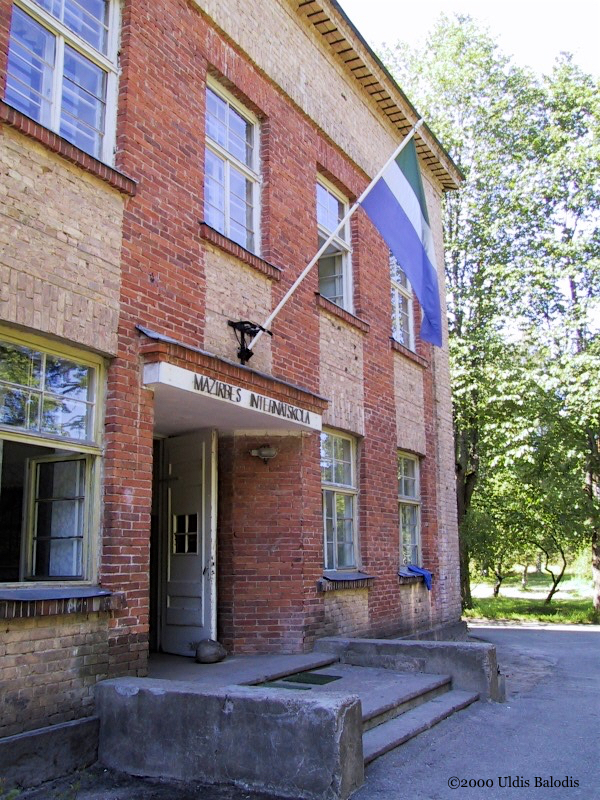
That summer I had been invited to stay in Irē while the Livonian youth camp, Piški Tēḑ, was taking place. The participants ranged in age from very young, only to 3 or so, all the way to older teenagers, 17 or 18. The camp was much like other summer camps I had seen. There were sports and crafts, as well as, social activities. The camp also offered the children an hour of Livonian instruction every day. None of the participants and very few of the teachers spoke any appreciable amount of Livonian. I felt that the intent of the summer camp was to build Livonian identity, while also giving the children who were already interested in their ancestral language and culture, an opportunity to learn more and to meet the people working today to keep the language alive. This building is the boarding school built in Irē in 1939, shortly before the Soviet occupation. It served as living quarters, classroom, and cafeteria for the camp participants. The name above the entrance is given in Latvian, but the flag flying above it is Livonian.
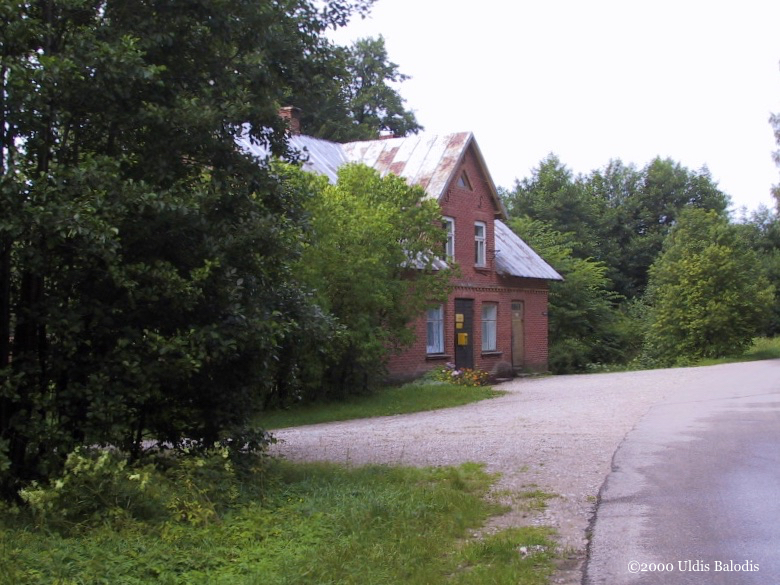
Aside from Kūolka, Irē is the largest coast community. It has facilities, like this post office, that none of the other coast towns have. This little post office also doubles as a newsstand. I would go there every day and buy the daily paper to read about the news of the world. This would be my only link to the world beyond the coast.
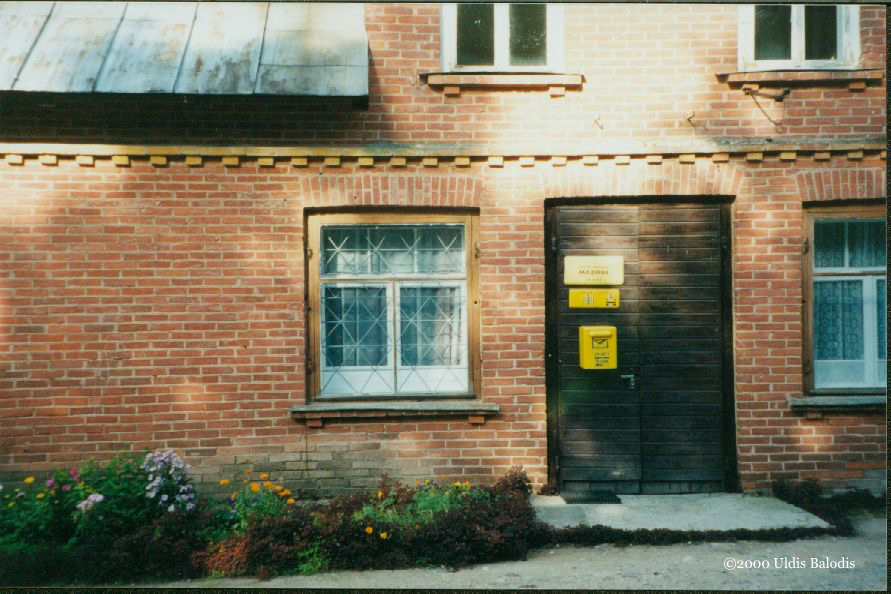
Sun and shadows stream across the front of the Irē post office, creating beautiful patterns of intermittent light and darkness.
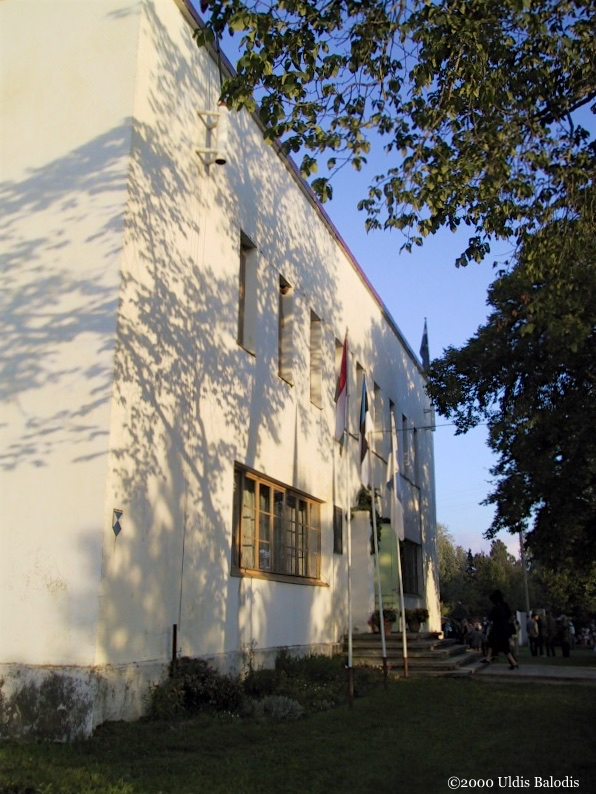
The Livonian National Hall was the culmination of efforts by the Livonians to organize themselves and promote their identity in the years leading up to World War II. Completed in 1939, its purpose was to serve as a focus for Livonian cultural activity on the nation’s native coast. Following the Soviet occupation in 1940, the building was seized. It was not returned to the Livonians until after the reestablishment of Latvian independence in 1991.

These two plaques are affixed to the left and right of the front entrance to the Livonian National Hall. The inscription is given in Latvian, Livonian, Hungarian, Estonian, and Finnish (counterclockwise beginning at top left). Translated into English it reads:
Livonian National Hall
1938–1939
This building was built by the Livonians with the help of their native Latvia and that of their sister nations, the Finns, Estonians, and Hungarians.
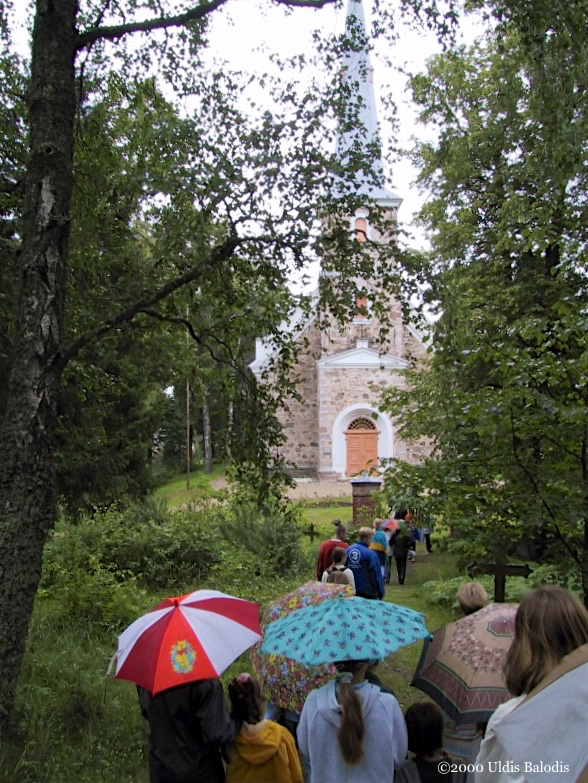
For a few years between the world wars, this was the only church in the world where services could be heard in Livonian. The path leading to the church from the road passes through the local graveyard. That summer I would see many smaller graveyards in the other coast communities, but this one had the most interesting energy. Many of the grave markers were very old, and they seemed to be laid out along the path in somewhat of a haphazard fashion. They moved with the rolling landscape. The place was rendered mysterious by the darkness mixed with the deep green light filtering in through the treetops.
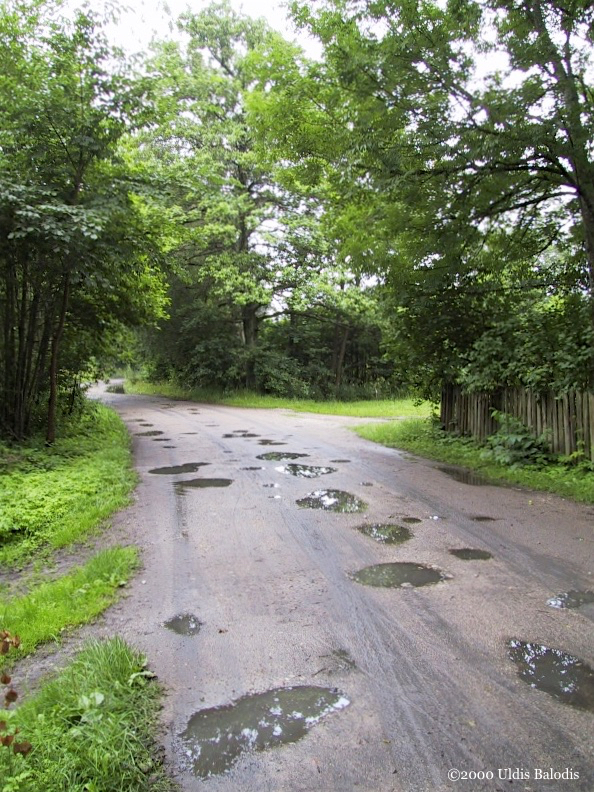
It was a stormy summer, and rainy days were more frequent than sunny ones. Here puddles dot the main road in Ire, leading from the village to the beach.
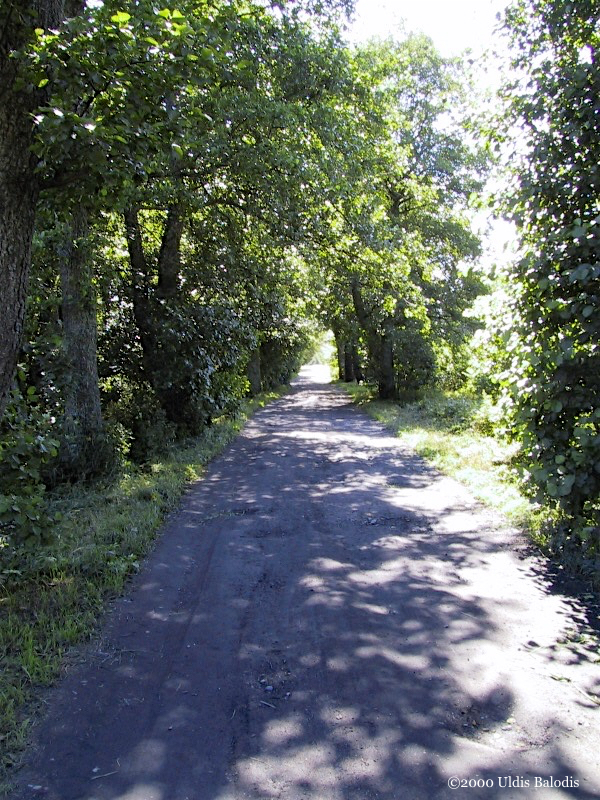
After leaving the coast, I spent several years living in Northern California. Driving through the forest there, I would see beautiful shadows cast by the trees onto the road. Myriad shapes, none of which had a name. Looking up at the trees, the light illuminating their leaves, I would feel that this brilliance was surely the definition of the color green. The coast had the same brilliance, the same shadows. Studying Livonian I would learn that this was not lost on the people of the coast. In their language there are two words for green, one for regular green, and one for the green of trees.
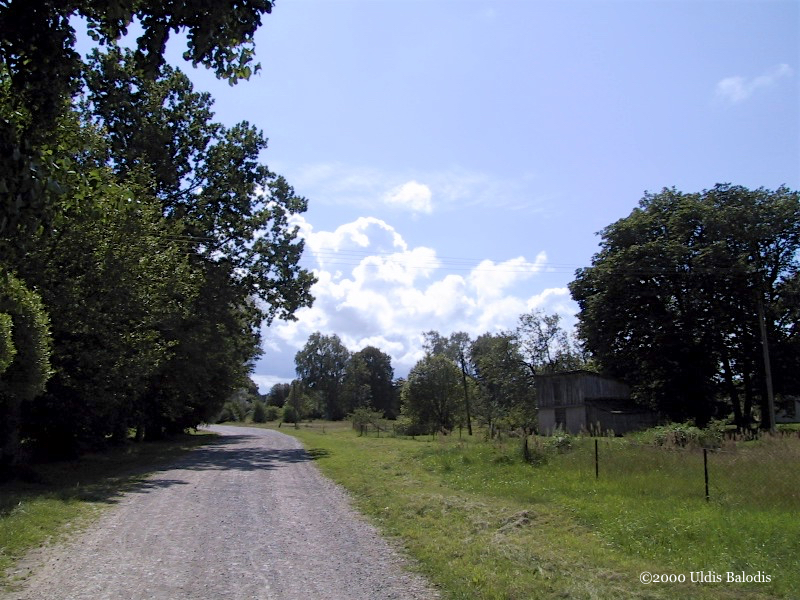
Walking to the beach one day, I turned around to snap this picture of the path leading back in the direction of the village. The giant cumulus clouds, characteristic of the summer sky in this part of the world, loom in the distance.

On the eastern fringe of Irē, hidden away in a thicket near the beach, is the boat graveyard. Boats that were no longer of use would be dragged here by their owners. In time, the wooden vessels come to be reclaimed by the forest.
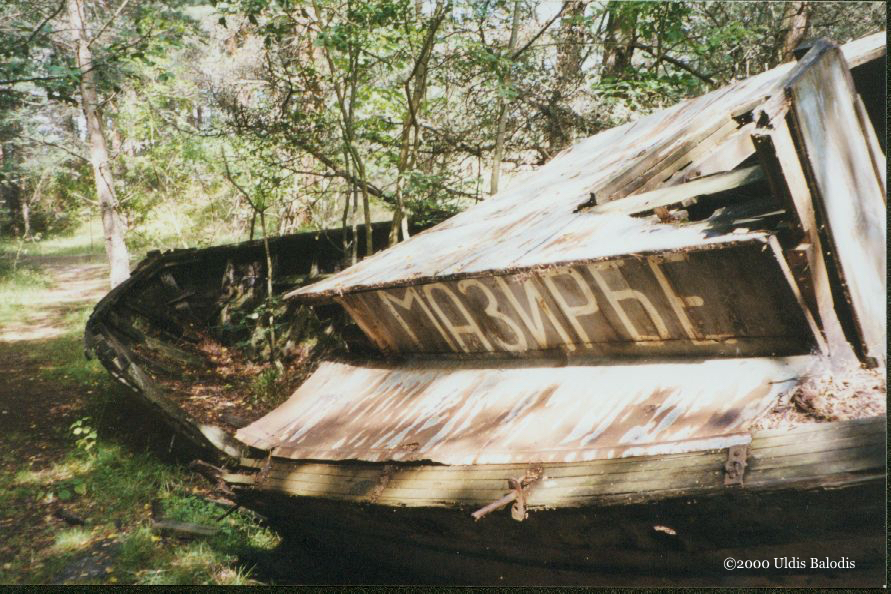
Neither Latvian nor Livonian has ever been written in the Cyrillic script used by Russian. Yet here in the boat graveyard was an old boat with the Latvian name for Irē, Mazirbe, written in Cyrillic on its side. I couldn’t imagine why that was, and no one else seemed to know the secret of this boat’s story.

Light streams across the trees near the boat graveyard and the beach. I never tired of seeing the beautiful interplay of light and shadow in the magical landscape of the coast.
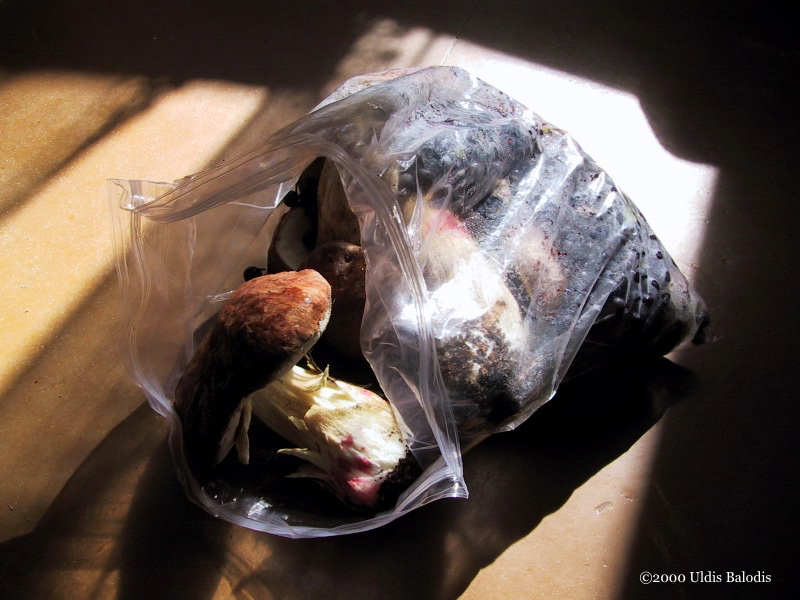
A gift from the teachers at the camp. A plastic bag full of the bounty of the coast forest, from a day of gathering mushrooms and berries in the woods. Even on the floor of my little room, the light brought the contents of the bag to life, casting beautiful shadows within and without.